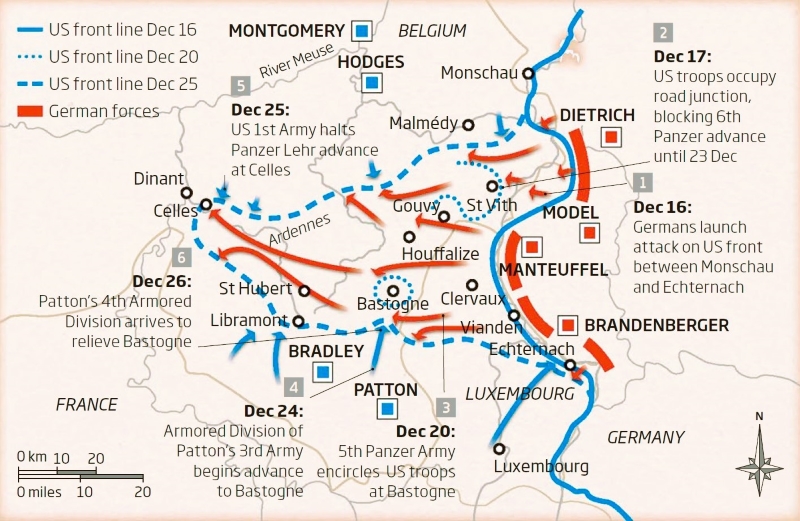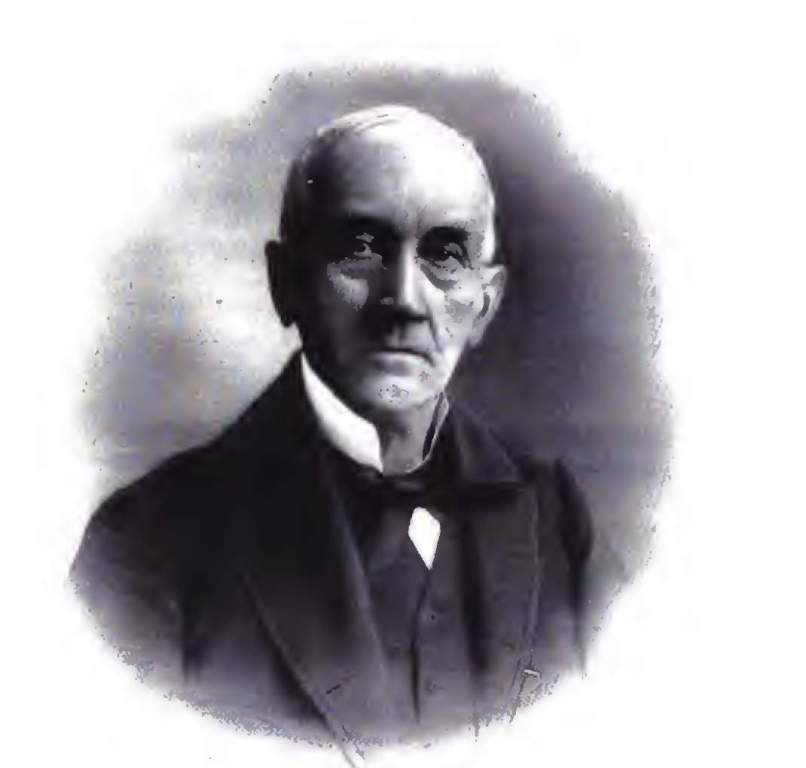Battle of the Bulge?
By fall 1944, the Allied advance across Europe had lost its momentum. In mid-December, Germany launched an unexpected counteroffensive. The territory through which they chose to attack was equally unexpected—the densely forested Ardennes region of eastern Belgium.
This was difficult terrain, and the Allies, who were stretched out along a front of nearly 600 miles (1,000 km), had left it sparsely defended. The German plan was to break through Allied lines and isolate the British and American forces. The British forces to the north could then be encircled and destroyed, and Hitler could negotiate a peace from a position of strength.
The United States units in the Ardennes were caught finally by surprise, and the Germans drove a wedge, or “bulge,” into the Allied lines, starting on December 16, 1944. However, the US forces held several strategic locations, which slowed the offensive.
The British were then able to reinforce the United States units defending the northern line of the battle, while United States General George Patton’s Third Army drove up from the south. Patton’s successful relief of the beleaguered troops at Bastogne played a key role in halting the German offensive. Between January 8 and 16, the Allied armies attempted to retake the bulge driven into their lines, and the Germans had to carry out a rapid withdrawal to escape.
As a consequence, the losses were heavy on both sides, but the Germans lost a great deal of equipment and stores, and the Battle of the Bulge effectively ended their resistance on the Western Front.
THE ARDENNES FRONT LINE
This map shows the American front line at the Ardennes forest before and during the Battle of the Bulge . The Germans advanced almost 100 miles (160 km) west, forcing the Allies from the Ardennes. By December 26, Patton’s Third Army had reached Bastogne, and by January 16, 1945, all of the German gains had been retaken.

THE GERMAN ADVANCE
Waffen SS troops pass a wrecked United States M3 half-track during the offensive. The thick woods of the Ardennes provided concealment for the massing of forces, while the high ground offered a drier terrain for German tanks. To minimize the danger from Allied air power, German forces struck when the forecast promised mist, rain, and snowy skies.
Read More: Memorable Photographs of Nazi History







